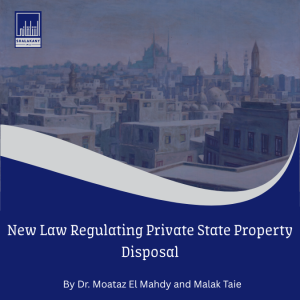As part of the Egyptian government ongoing effort to attract foreign investments to the mining sector in Egypt, the Mineral Resources Law’s (the “Law”) new Executive Regulations (the “Regulations”) were promulgated. The Regulations follow shortly after the recent amendments to the Law that were enacted last August. The Regulations appear to eliminate the need for mining companies to form joint ventures with the Egyptian government and to limit state royalties to a maximum 20%, measures long encouraged by the private sector.
The Regulations were issued by virtue of Prime Ministerial Decree No. 108 for the Year 2020 and published in the official gazette on 14 January 2020. The Regulations were issued with a full repealing effect to the existing executive regulations.
We will briefly delve into the key provisions of the Regulations.
Rent and Royalties
While the Law does not specify the tax regime or the actual terms and conditions to be included in grants of mineral rights, as these are left to the competent authority, which is the Egyptian Mineral Resources Authority (“EMRA”), that said, the Regulations grant the broad outline of the tax regime and outline some terms and conditions, such as royalties, rent during the exploitation period and an eight year exploration period. The Regulations grant EMRA and the other competent authorities within the mining field broader powers based on which more detailed terms and conditions remain to be laid out. These broader powers provide more flexibility and discretion to EMRA and the other competent authorities which entails less amendments to the Law and the Regulations.
The private sector and mining companies have long complained about Egypt’s system of mandatory joint ventures, burdensome royalties and profit-sharing agreements have made it unprofitable to explore for and exploit minerals. Under the Regulations, although EMRA has the right to form joint ventures with a minimum state ownership of 25%, private mining companies would not necessarily have to do this if their mining agreements were ratified by law.
In addition, under the Regulations, mining companies would have to pay a rental value for their mines and quarries as well as royalties at a separate rate determined for each type of ore extracted. The royalties vary between 5% to 20% of the raw production value.
Permits
Under the Regulations, mine exploration permits may now be extended beyond the original two-year period. Further, with regard to undertaking exploitation activities, the licensee may request the renewal of the exploitation license for one or more periods provided that the total period of the exploitation license does not exceed 15 years.
The licensee may further request that the exploitation license be placed on hold, provided that such request indicates the period for which the license is to be placed on hold and the technical justification for such request.
The Regulations require that a license be obtained in order to undertake exploitation activities for stone and salt quarries. This request must include all data and must be accompanied by the required documents required as outlined under the Regulations.
Under the Regulations, prior to issuing the license in order to undertake exploitation activities for stone and salt quarries, the competent authority as well as a joint committee formed within EMRA must conduct a technical inspection of the stone quarry.
Market reaction
In a recent statement, President and CEO of Aton Resources Inc., Mark W. Campbell said that the recent amendments to the Law as well as the Regulations create an environment that will compete with the rest of the world to attract exploration companies (such as Aton) to invest in Egypt. CEO Mark further stipulated that “the big take-away from the Regulations is the end of the profit-sharing agreements and the creation of a fiscal regime where if the terms and conditions that are applied are competitive with the rest of the world, with the result that Egypt will see a bright future in mineral exploration and mining.”



